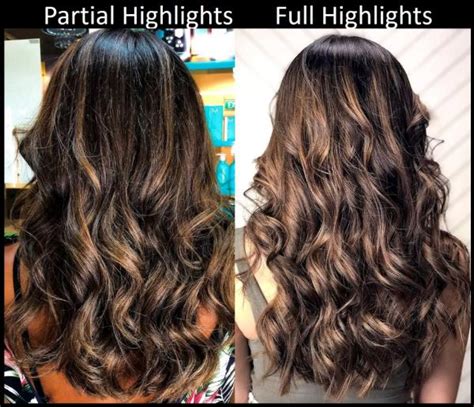Introduction

In the realm of visual enhancement, partial highlight and full highlight techniques stand apart, each offering unique advantages in revealing intricate details and enhancing the aesthetics of images. This article delves into the distinctions between these two techniques, empowering you with the knowledge to choose the optimal approach for your specific needs.
Partial Highlight: Precision and Subtlety
Partial highlighting employs a concentrated beam of light to illuminate only a portion of an image, creating a subtle yet impactful effect. By selectively emphasizing specific areas, partial highlights accentuate contours, textures, and depth, drawing attention to key elements without overpowering the overall composition.
-
Applications:
- Enhancing portraits by highlighting facial features and hair
- Accentuating product details in e-commerce photography
- Adding a touch of radiance to jewelry and gemstones
Full Highlight: All-Inclusive Illumination
Unlike partial highlight, full highlight illuminates the entire image evenly. This technique provides comprehensive exposure, ensuring that all elements within the frame are visible and well-defined. Full highlights are ideal for capturing intricate details, preserving textures, and creating a sense of spaciousness.
-
Applications:
- Landscape photography for capturing wide vistas and sweeping panoramas
- Architectural photography for showcasing building facades and interior spaces
- Close-up macro photography to reveal hidden details and textures
Comparison Chart
| Feature | Partial Highlight | Full Highlight |
|---|---|---|
| Illumination | Targeted | Even |
| Effect | Subtle emphasis | Comprehensive exposure |
| Applications | Detail enhancement, portraits | Wide vistas, architectural photography |
| Pros | Precision, subtlety | Uniform illumination, detail preservation |
| Cons | Limited area coverage | Potential for overexposure |
Customer Perspectives: Unlocking Value through Engagement
Understanding the needs and preferences of customers is paramount in choosing the optimal highlighting technique. By asking questions and actively listening to their feedback, you can tailor your approach to meet their specific requirements.
- “Can you highlight the texture of the fabric to showcase its intricate weave?”
- “I want to capture the grand scale of the landscape, including the distant mountains and vast sky.”
- “Can you adjust the highlights to balance the exposure without losing the details in the shadows?”
Innovative Applications: Unleashing the Power of Highlight Fusion
The fusion of partial and full highlights presents exciting possibilities for innovative applications. By combining the precision of partial highlighting with the comprehensive coverage of full highlighting, you can create visually captivating images that offer both subtle enhancements and overall illumination.
Table 1: Featured Applications of Highlight Fusion
| Application | Technique | Benefits |
|---|---|---|
| Portrait photography | Partial highlights on facial features, full highlight on background | Accentuates facial details while preserving the overall ambiance |
| Architectural photography | Full highlight on building facade, partial highlights on architectural details | Provides comprehensive exposure while highlighting unique elements |
| Product photography | Partial highlights on product details, full highlight on packaging | Showcases product features while creating a sense of depth |
Conclusion
Partial highlight and full highlight techniques empower you to craft images that convey your artistic vision and meet the unique needs of your customers. By understanding the distinctions between these techniques, you can harness their combined power to unlock new possibilities and create visually stunning masterpieces.
